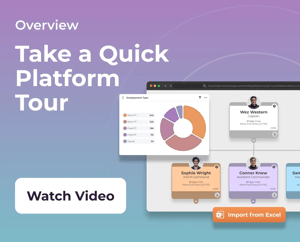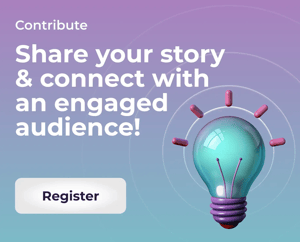Talent acquisition, full employee LifeCycle, Org Chart, performance, surveys...
Build Dynamic Organisational Charts
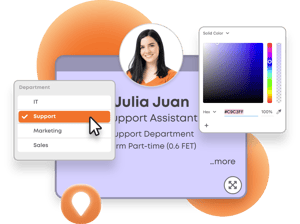
Affordable, instant set up, enterprise-grade tool
Never Settle for a Generic Drawing Tool Again.
Built exclusively for HR teams, the Martian Logic Organizational Chart offers you the best of both worlds: affordable & quick to get started with.
It’s way more than a static diagram…
It’s way more than a static diagram…
- Equipped with enterprise-grade features
- Automatic & real-time updates
- Free to create & test

Built-in features
Import Your Data From Excel
Seamlessly create your Organizational Chart with our instant import tool. Simply upload an Excel spreadsheet containing your existing data & watch your Org Chart come to life in a matter of seconds.
Or Build it Manually
If you can’t import from Excel, you can build your Org Chart from scratch – it’s just as quick & simple. Effortlessly add, delete, and move the nodes and branches on your Org Chart to capture your employees and positions. With heaps of maintenance capabilities, keeping your org chart up-to-date with your evolving structure has never been easier.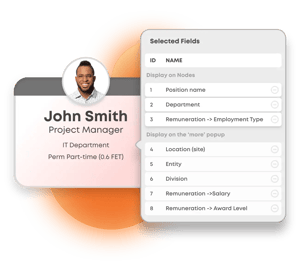
Live Sharing
Share your Organizational Chart in whichever way you want. Just grab a link from the platform and share an interactive & live version directly with employees or embed it on your intranet. Let your employees view & access the data on your Org Chart with ease.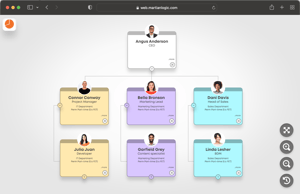
PDF Export
If you need a concise snapshot of your organisational structure, Martian Logic gives you the option to export your Org Chart as a convenient PDF, ensuring you have full flexibility to share your data in ways that best suit your needs.

BENEFITS OF USING THE RIGHT TOOL
Long term byproducts of using a proper HR tool
Position Library & Employee Database
As you build your Martian Logic Organizational Chart, you simultaneously create valuable assets that connect directly to it. Maintaining a Single Source of Truth (SSoT) system, leverage both a unique position library & employee database to help you manage all of your employees & positions. Whether you update data from your Organizational Chart, unique position library, or employee database, there’s no need to worry about duplicates or conflicting information – make changes anywhere & trust that it’ll automatically update across the platform for you.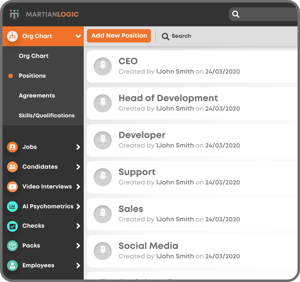
Bulk updates
With the ability to import additional employee & position data at any time, you can make sure your Org Chart is always up-to-date to reflect the latest changes in your organisation. Simply click on a position, select ‘import additional nodes’, and watch your Org Chart do all the editing & reformatting for you.
RECRUIT & ONBOARD
The process of hiring and integrating new team members begins with the Org Chart. It’s the first module in the platform to recognise who’s coming into your organisation, rather than the last.
OFF-BOARDING
Initiating the offboarding of an existing employee also starts with the Org Chart. By selecting their node and choosing the offboarding option, a fully-customised offboarding process is triggered, making sure that all essential measures are executed & the relevant stakeholders are notified.
CHANGE OF CONDITIONS
Initiating a change of conditions for an existing employee, also begins directly from the Org Chart. This step activates your unique approval workflow & brings up the relevant custom-built approval forms, making the Org Chart the first module within the platform to know about these proposed changes.
Organisational Chart Builder FAQs
Still have questions? Take a read of our HR experts’ answers to the most frequently asked questions about organisational charts.
What is an Organizational Chart?
An Organizational Chart, commonly referred to as an Org Chart, is a tool that lets you visualise all of the structural information of your organisation, such as your employees, the positions they’re filling, who they report to, and their remuneration details.An organisational chart, also known as an org chart, is a diagram that details an organisation’s internal structure. It graphically represents the relationships between different employees and how they are positioned within their teams, departments, and the wider organisation. Org charts can be structured in a variety of ways, including in a hierarchical, divisional, and team-based structure.
It can either be a static diagram made up of rectangles and lines, or go beyond just the pretty picture, to a dynamic & interactive tool for HR. If created using specialised HR software, your Org Chart will automatically stay up-to-date at all times and let you initiate employee-related processes directly from it, such as recruitment & onboarding, change of conditions, and offboarding.
Can I create an Organizational Chart in Excel?
Yes, you can create an Organizational Chart in Excel. However, it’ll only give you the option to select a basic template that requires manual data entry and re-formatting. A smarter & swifter alternative is to prepare your employee & position data within an Excel spreadsheet and then effortlessly import that file into a specialised Org Chart software like Martian Logic. In a matter of seconds, it’ll automatically draw on & transform your data into a fully-fledged Organizational Chart, hassle-free.
What information should be visible on Organizational Charts?
Typically, the must-have details on Organizational Charts include employee name & job title. However, every organisation is unique and your Org Chart should be able to cater to the different requirements of each. With platforms such as Martian Logic, you have full freedom over what information is visible on your Org Chart. Some examples would be remuneration (REM) details, contract type, working hours, and multiple people performing certain positions.
What are the most common types of Organizational Charts?
The 5 most commonly used organizational charts are:
Hierarchical: The most common type of Org Chart used to visualise the structure of an organisation. In a pyramid-type structure, it illustrates reporting lines and positions. The C-level positions and executives are at the top while entry-level employees are positioned closer to the bottom.
Divisional: Structured by the respective divisions of an organisation, this Org Chart visualises entire teams such as Sales, Marketing, Support, etc.
Horizontal/Flat: This Org Chart is structured horizontally to reflect limited hierarchy between those in more senior positions such as executives and managers, and the rest of an organisation’s employees.
Functional: This Org Chart is structured by grouping employees according to their skills and functions, such as research & development, operations, content marketing, etc.
Team-Based: This Org Chart structures employees by team to encourage collaborative problem-solving & cooperation. For example, finance team, HR team, sales team, etc.
With a specialised Org Chart builder such as Martian Logic, you can visualise your organisational structure in any way that works best for you.
How do you keep an Organizational Chart up-to-date?
For static Org Charts that have been created using generic diagram drawing tools, keeping it up-to-date requires you to manually reformat everything by adding, deleting & moving the textboxes, lines, and shapes.
With a specialised Org Chart Builder such as Martian Logic, you don’t need to worry about this step as the platform keeps it automatically up-to-date to the second. Any changes made to employee or position data will translate across the platform, eliminating the need for you to update multiple elements in multiple places.
How much does it cost to build an Organizational Chart?
Building an Organizational Chart using Martian Logic is just as affordable as creating one using a generic diagram drawing tool, but it’ll deliver way more long-term benefits for your organisation. By offering 3 types of plans, you can select whichever works best for you – free, premium, or enterprise. With no set-up fees or lock-in contracts, you can build an Org Chart and test it for free. If you decide to go ahead with the product, the price will depend on the extent to which you use it and the size of your organisation putting you in complete control of your expenses.
